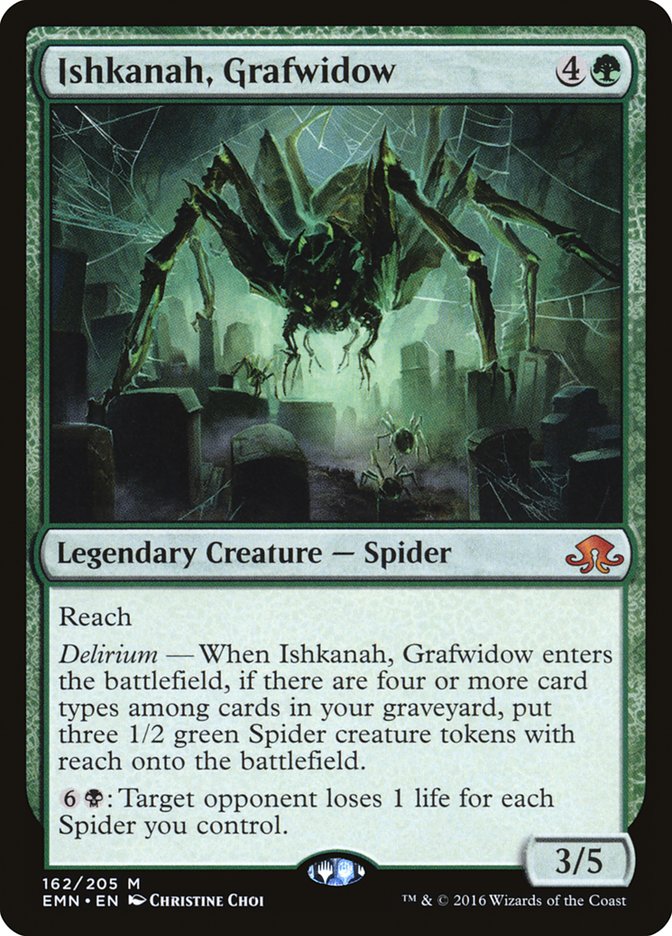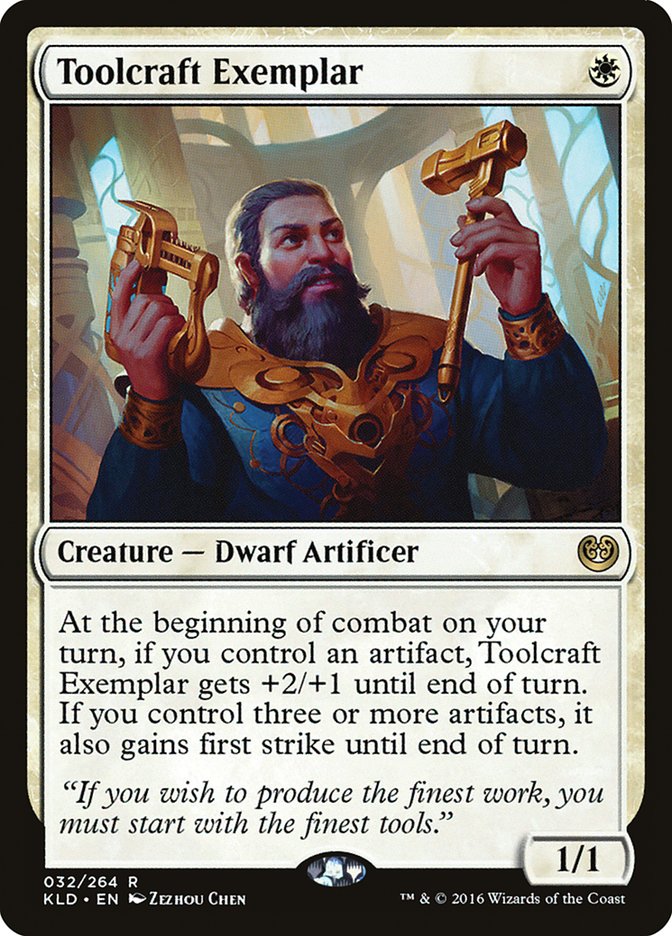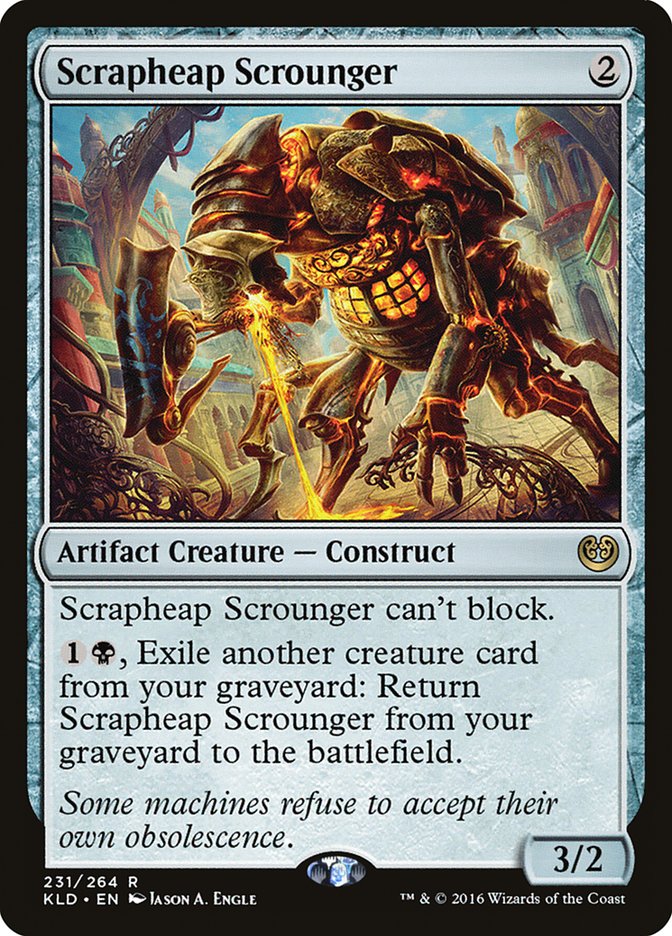The “three-deck metagame” Standard has held up for the last few weeks may be a little more precarious than we’ve realized. As I’ve started playing Standard again, I’m seeing the destabilizing forces myself. The cracks are forming, and I can imagine Standard bursting open again. I think the impetus is the Aetherworks Marvel deck of Logan Nettles, aka Jaberwocki:
Creatures (11)
Planeswalkers (3)
Lands (22)
Spells (24)

This deck has gotten a lot of press after Logan (Jaberwocki) finished in the Top 4 of a Standard PTQ on Magic Online with it, and rightfully so. As Logan admits, this deck isn’t broken. It’s not even the new deck to beat. What it is is a reliable counter to B/G Delirium that has game against the rest of the format.
At Pro Tour Kaladesh, Aetherworks Marvel kept “Control” B/G Delirium, like we see now, from being the breakout deck of the tournament, despite it likely being the best deck in the format. After the success of blue decks at the Pro Tour launched blue into the lead in the format, Aetherworks Marvel was entirely pushed out of the format, which allowed B/G Delirium to creep back in.
Following other writers on this site more than playing, it seems there’s a firm consensus that B/G Delirium is a better deck than W/U Flash, and this makes perfect sense to me. The matchup between the two of them is very close, but I think the aggressive decks in the format are much better against W/U Flash than they are against B/G Delirium, because you can actually get under Smuggler’s Copter and Spell Queller.
Previously, getting under Reflector Mage was almost impossible, but the fact that aggressive decks have their own Smuggler’s Copters now really changes that dynamic. Meanwhile, it’s almost impossible for an aggressive deck to beat Grasp of Darkness followed by Liliana, the Last Hope; followed by Grapple with the Past; and then Ishkanah, Grafwidow, no matter what their start was. We could debate which of the two is better against the control decks of the format, but lately that hasn’t really been a relevant question.
It looked like we were settling into a world where B/G was the deck to beat and it had no horrible matchups, and W/U was comparable since, while I think it’s worse against aggressive decks, it can certainly still win fairly often. Now there’s a playable Aetherworks Marvel deck, which means B/G Delirium does have a terrible matchup, which causes a major shift in the balance of power.
So why is this Aetherworks Marvel deck suddenly playable? Well, the Aetherworks Marvel decks that were built for the Pro Tour were built to compete with each other, which meant going as big as possible as quickly as possible, but when everyone else is playing midrange strategies, you simply don’t need to go as big. Marvel can still go over the top of everything they’re doing very reliably without Ulamog, the Ceaseless Hunger.
Instead, the rest of the deck is built around reliably making plays and acknowledging that Spell Queller is a card, unlike many of the PT versions. Servant of the Conduit lets you cast Aetherworks Marvel before the opponent has enough mana for Spell Queller if you’re on the play, and Harnessed Lightning and Chandra, Torch of Defiance let you get Spell Queller off the battlefield. You still don’t want to play against W/U Flash, but there’s a huge difference between being about 40% to win against 25% of the field and being maybe 5% to win against 25% of the field (winning roughly an extra 8.75% of your matches across the board).
Furthermore, the deck just learned the fundamental truth of the format, that Ishkanah just beats a huge number of decks, so this build of Marvel simply takes advantage of that, picking up a lot of free wins against aggressive decks where previously it would have an uncastable Ulamog, the Ceaseless Hunger, and now it has a game winning five-drop.
So what happens to the metagame when there’s a clean counter to B/G Delirium? Well, we’d expect it to lose a decent share of the metagame, as players who would play it are scared off by the new threat, and we’d expect more players to pick up W/U Flash, which preys on Marvel. Does that simply push Marvel out of the format before it can get its foot in the door and return everything to the status quo? I think not.
First, as mentioned, a rise in W/U Flash isn’t simply game over for this Marvel deck. Second, and more importantly, these aren’t the only forces at play.
Remember how I said aggressive decks can go under W/U Flash? Well, if W/U Flash picks up metagame shares, that should simply attract more aggressive decks to prey on it. Now, that only works if people get the picture and play those decks. Well, we have some evidence that they do, and that they will. Take Gerry Thompson’s article from earlier this week, or, even more relevantly to my interests, Craig Wescoe’s from last week.
The reason I say Craig’s is more relevant to my interests is that I actually picked that deck up and played a few Leagues with it (my record playing precisely his list at this exact moment is 12-2 in competitive Leagues on Magic Online). One of my match losses was to an aggressive build of B/G Delirium, and the other was to Aetherworks Marvel. However, despite my relatively good start with this deck, almost all of my wins are 2-1, so my record feels somewhat precarious and the deck doesn’t really feel broken.
That said, I think it’s reliably ahead of W/U Flash and can hold its own against the Ishkanah, Grafwidow decks, and I’ve been happy with how it matches up against the other aggressive decks in the format, since it both comes out faster, having the lowest curve in the format, and ultimately gets bigger thanks to its Anthem effects. (This is exactly like Humans from Standard before rotation, which easily beat other non-Collected Company aggro decks for the same reason).
Creatures (23)
- 4 Reckless Bushwhacker
- 4 Thraben Inspector
- 3 Pia Nalaar
- 4 Scrapheap Scrounger
- 4 Toolcraft Exemplar
- 4 Inventor's Apprentice
Planeswalkers (3)
Lands (22)
Spells (12)

The last time I played the format, I played R/W Tokens, which is similarly built to be faster than what anyone is expecting by having an appreciably lower curve than Mardu Vehicles, and I liked that deck as well. I’m not sure which of these hyper-aggressive decks is better. I think R/W Tokens has more explosive draws, which I think makes it slightly better against Aetherworks Marvel, but Mono-White is more consistent in that it doesn’t need to line up Reckless Bushwhacker and tokens, and, more broadly, more of its cards are interchangeable. It’s also nice to play four fewer lands.
One thing I really like about Mono-White is that it has Gideon, Ally of Zendikar in the sideboard. In the article mentioned above, Gerry wrote about how Gideon can be a trap because decks warp to be able to attack it, and it’s not where you want to be in some matchups. While that’s true, there are still some decks that have a really hard time beating Gideon, so I like where Gerry’s head is, moving away from Gideon and getting even more aggressive, but if we stay in white, we still have access to Gideon in the spots where he really shines, and that’s a big deal in that it can lead to a lot of free wins because the card is just so good against people who aren’t prepared.
So let’s look back at the big picture. We had a relative balance W/U Flash, B/G Delirium, and Mardu Vehicles (although really, that last one was kind of a stand-in for any red aggressive deck, as there was much less consensus on the best way to go there). Then we add Aetherworks Marvel, which pushes Delirium down and raises Flash up, but then we add hyper-aggressive strategies which prey on Flash to that mix, and now we’re looking at five archetypes. Really the hyper-aggressive decks kind of occupy the same portion of the metagame as Mardu Vehicles, so it may be better to look at what’s happening as that, with the advent of R/G Marvel, the Mardu decks speed up because they need to race Marvel, because the closer they are to midrange, the worse they are against this new challenger.
At the same time, my results lead me to believe that this is what they want to do to combat the potential increase in W/U Flash anyway; however, I should acknowledge here that I never really understood the draw to the slower Vehicles strategies to begin with, so I could still be missing whatever force it is that’s kept them around this long.
So where does all of that leave us, moving forward? If that’s where things are going, how do we prepare, and how do we stay ahead of it? Well, I have some bad news for you there. Things opening up generally makes the format less exploitable, not more, so I don’t see a clear solution.
If you have a lot of experience with B/G Delirium or W/U Flash, I think there’s a good chance you should stick with it. There’s a lot of play to those decks in this format, and I’ve seen great players very recently say they still have no idea about even basic things like how to sideboard in that matchup. If you play better than most with one of those decks, there’s a good chance you can weather whatever shakeup there may be.
At the same time, if you don’t have a lot of familiarity with those decks, I certainly don’t think now is the time to pick them up. Those players I was just addressing in the last paragraph? They’ll be around, and they’ll definitely leverage their better familiarity with the matchup if you’re late to the party with these, and you’ll certainly have to beat them. If you pick up one of the newer strategies I’ve talked about, your opponents will have less familiarity, and the matchup will likely be more lopsided, which means they’re less likely to be able to leverage their advantage to turn a loss into a win.
Personally, I still have a lot of testing to do, but if my results stay anything like they’ve been, I plan to be attacking with Toolcraft Exemplar and Scrapheap Scrounger, and the only real question is who will be backing them up.










